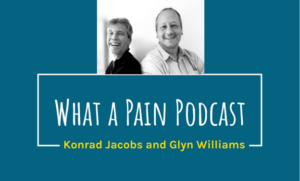
Glyn Williams (Anaesthetist at Great Ormond Street Hospital) and Konrad Jacobs (clinical psychologist, Oxford) have started a new podcast – “What a Pain” – about chronic pain in children and adolescents. Through informal conversations, they hope to learn more about this fascinating topic from researchers, clinicians and patients, but also find out a little bit about them, what makes them tick, and why they ended up working in pain.
You can access it through your normal podcast apps (Spotify, apple, google, etc; search for ‘what a pain’) and here: https://shows.acast.com/what-a-pain



 SPPM 13th Annual Meeting
SPPM 13th Annual Meeting